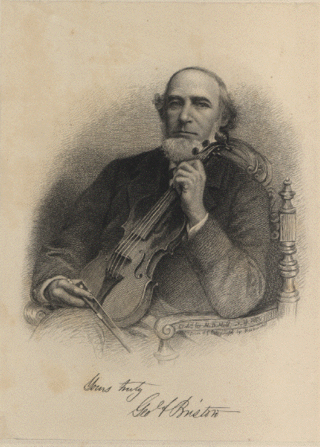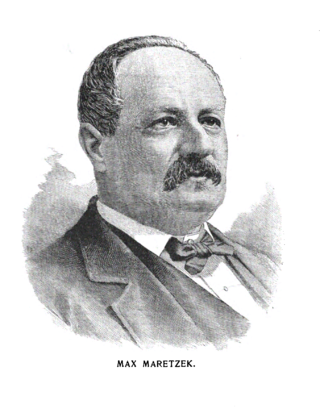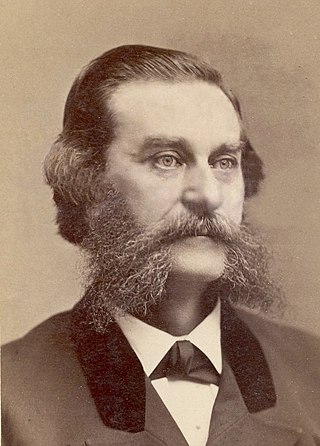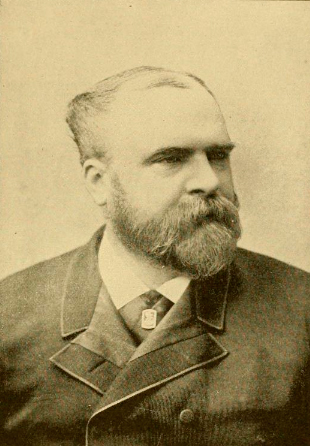
Theodore Eisfeld (April 11, 1816, Wolfenbüttel, Duchy of Brunswick – 16 September 1882, Wiesbaden) was a conductor, most notably of the New York Philharmonic Society, which became the New York Philharmonic.

Theodore Eisfeld (April 11, 1816, Wolfenbüttel, Duchy of Brunswick – 16 September 1882, Wiesbaden) was a conductor, most notably of the New York Philharmonic Society, which became the New York Philharmonic.
Eisfeld's chief instructor in musical composition was Carl Gottlieb Reissiger, of Dresden. Between 1839 and 1843 he served as Kapellmeister of the Court Theatre at Wiesbaden. [1] He came to New York in 1848, and in 1849 was the first man chosen by the New York Philharmonic Society to be sole conductor for an entire season (prior to this time it had been customary for several musicians to share the conducting duties). [2] He began the custom of giving an annual Christmas performance of Handel's Messiah . He also introduced the first regular concerts of chamber music in New York. [1]
From 1849 through the 1865/1866 season, when he resigned, Eisfeld often served as conductor of the New York Philharmonic Society. [3] In this period it was customary for the conductor to change from season to season, sometimes with two men sharing the duties. On 18 February 1851, he began a series of quartet concerts, the first of which was given at Hope Chapel. Eisfeld was also the first conductor of the Brooklyn Philharmonic Society, which was founded in 1857. [4] He continued in this position, alternating with Theodore Thomas between 1862 and 1865, before Thomas took over. This period also saw the composition of some brief works by Eisfeld. [5]
On Eisfeld's return trip from a visit to Europe in September 1858, he was one of the few survivors of the burning of the steamship SS Austria where he was lashed to a platform and so drifted on the ocean, without food, for nearly two days and nights. Eisfeld never recovered from this extraordinary prostration, returning to Germany in 1866, and remaining there until his death in Wiesbaden at 66.
In his autobiography, Theodore Thomas described Eisfeld as follows:
Eisfeld belonged to the class of "time-beaters" and would make corrections in the harmonies of master-works he did not understand [1]

The New York Philharmonic, officially the Philharmonic-Symphony Society of New York, Inc., globally known as New York Philharmonic Orchestra (NYPO) or New York Philharmonic-Symphony Orchestra, is a symphony orchestra based in New York City. It is one of the leading American orchestras popularly called the "Big Five". The Philharmonic's home is David Geffen Hall, at New York's Lincoln Center for the Performing Arts.

Richard Upjohn was a British architect who emigrated to the United States and became most famous for his Gothic Revival churches. He was partially responsible for launching the movement to popularity in the United States. Upjohn also did extensive work in and helped to popularize the Italianate style. He was a founder and the first president of the American Institute of Architects. His son, Richard Michell Upjohn, (1828-1903), was also a well-known architect and served as a partner in his continued architectural firm in New York.

Charles H. Durkee was an American pioneer, Congressman, and United States Senator from Wisconsin. He was one of the founders of Kenosha, Wisconsin, and was a Governor of the Utah Territory in the last five years of his life.

Theodore Thomas was a German-American violinist, conductor, and orchestrator. He is considered the first renowned American orchestral conductor and was the founder and first music director of the Chicago Symphony Orchestra (1891–1905).

Leopold Damrosch was a German American orchestral conductor and composer.

George Frederick Bristow was an American composer. He advocated American classical music rather than European pieces. He was involved in a related controversy involving William Henry Fry and the New York Philharmonic Society.

Ureli Corelli Hill was an American conductor, and the first president and conductor of the New York Philharmonic Society.

Henry David Leslie was an English composer and conductor. Leslie was a leader in supporting amateur choral musicians in Britain, founding prize-winning amateur choral societies. He was also a supporter of musical higher education, helping to found national music schools.

Adolf Heinrich Anton Magnus Neuendorff, also known as Adolph Neuendorff, was a German-American composer, violinist, pianist and conductor, stage director, and theater manager.

Carl Bergmann was a German-American cellist and conductor.
Henry Christian Timm was a German-born American pianist, conductor, and composer.

Ludwig Karl Georg Pfeiffer, also known as Louis Pfeiffer, was a German physician, botanist and conchologist.

Max Maretzek was a Moravian-born composer, conductor, and impresario active in the United States and Latin America.

Benjamin Franklin Pitman was an American businessman who married Hawaiian nobility.

Carl Zerrahn was a German-born American flautist and conductor. His widespread activity in the region made him an influential figure in New England and Boston classical music, especially choral music, in the latter half of the 19th century. He was especially successful in the presentation of the great oratorios and the management of large choruses.
Frédéric Louis Ritter was a French composer, choral conductor, teacher, and author.

Sebastian Bach Mills was an English pianist, composer and piano instructor who made his concert career in the United States and gave the first American performances of many important works.
The Arion Society was a German-American musical society. It was founded in January 1854 to promote "the perpetuation of love for some of the characteristic elements of German civilization". It was disbanded because of Anti-German sentiment following World War I.